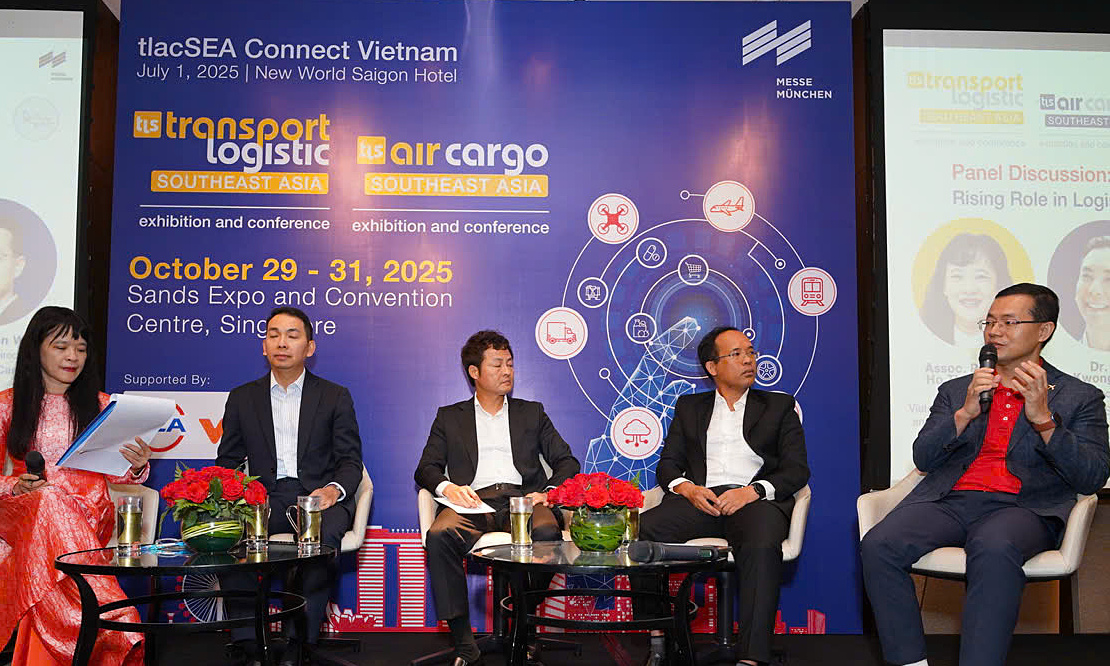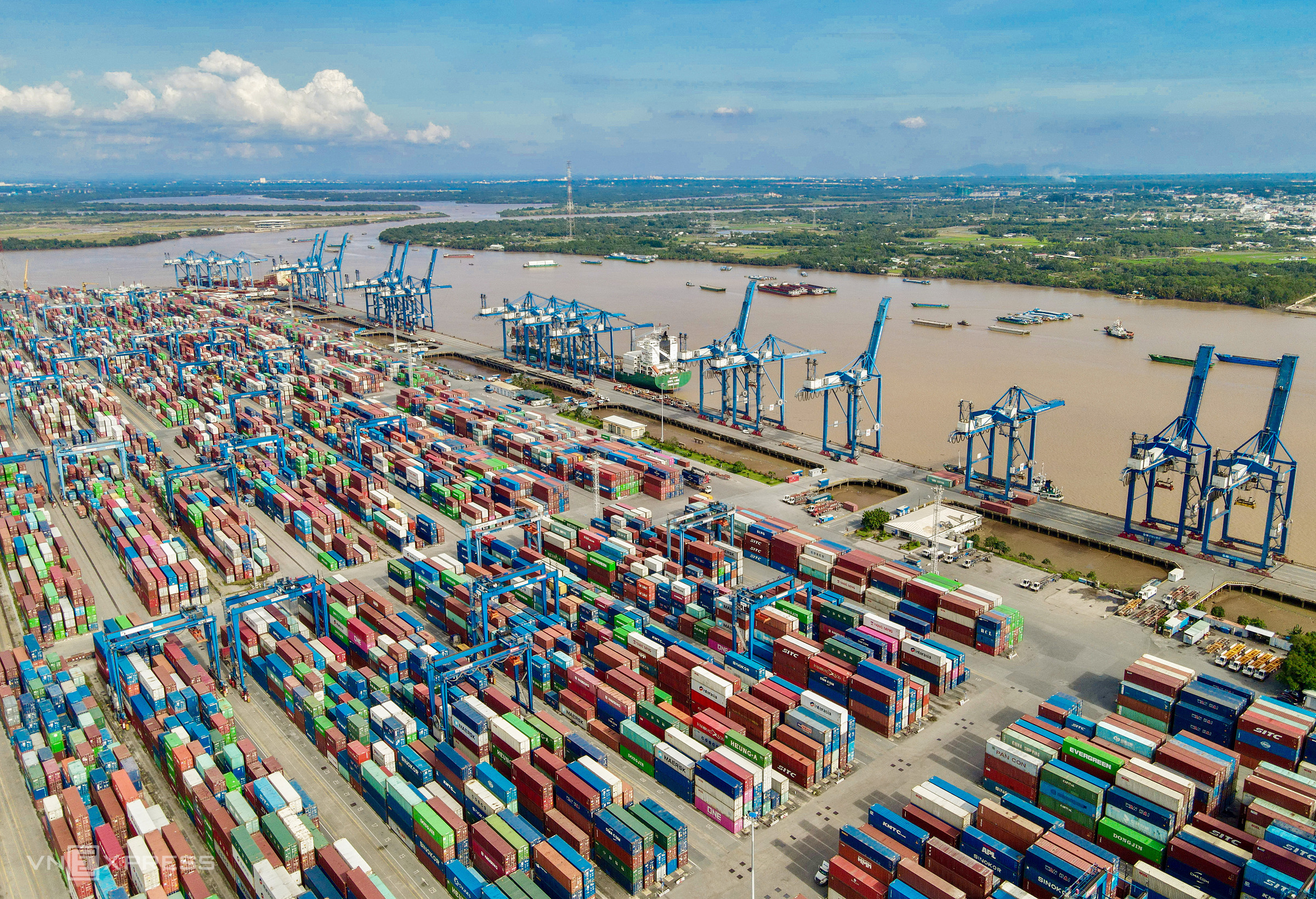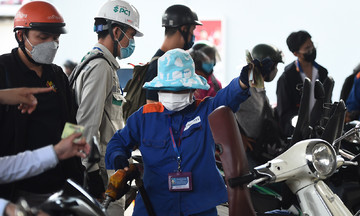Experts shared this assessment at the seminar "Responding to Global Trade Fluctuations - Vietnam's Rising Role in Logistics Connectivity and Supply Chains", part of the tlacSEA Connect event on 1/7.
The expanded Ho Chi Minh City (incorporating Binh Duong and Ba Ria - Vung Tau), the Long Thanh International Airport project, and investments in transport infrastructure like expressways and high-speed rail are driving Vietnam's potential as a regional logistics center.
Truong Nguyen Linh, Deputy General Director of Vietnam International Container Terminals (VICT), believes the expanded Ho Chi Minh City will become a "super port region" due to the convergence of three major seaports: Cai Mep - Thi Vai, Cat Lai, and the Can Gio international transshipment port project.
"I believe Vietnam has many development opportunities in the future, especially the expanded Ho Chi Minh City area, which has the potential to become a transshipment center for the country and even Asia," Linh said.
 |
Experts discuss at the seminar, on 1/7, in Ho Chi Minh City. Photo: BTC |
Experts discuss at the seminar, on 1/7, in Ho Chi Minh City. Photo: BTC
Along with the "super port region", Long Thanh International Airport, once operational, is expected to significantly impact aviation logistics capacity. Tony Anh, Deputy General Director of ITL Corporation and General Director of ITL Aviation Logistics, noted that Vietnam currently serves primarily as an origin and destination point, not a regional aviation hub. However, he believes this could change with Long Thanh airport. In its first phase, the project will have a cargo capacity of 1.2 million tons per year, potentially reaching 5 million tons upon completion, comparable to Hong Kong International Airport (China).
"This is an important stepping stone for Vietnam to gradually become a regional air transshipment center," Tony said.
Nelson Wu, CEO of Vietjetair Cargo, agreed, assessing Vietnam's well-connected location with the region, China, and India, as key to developing aviation logistics. Its role as a hub is becoming increasingly clear.
"We are optimistic about the growth prospects of the Vietnamese aviation industry in terms of regional connectivity and global expansion. This is also why we continue to invest in our fleet and infrastructure to anticipate this trend," he said. Vietjet has ordered three freighter aircraft, expected to be delivered later this year.
Beyond its potential as a logistics hub, Vietnam is playing an increasing role in the regional supply chain, with 80% of its GDP related to foreign trade. Electronic goods account for USD 120 billion in exports, 60-70% of which are transported by air due to their high value and time sensitivity.
Additionally, the projected 16-30% annual growth of e-commerce and the 14 new industrial parks announced in Quarter I further solidify Vietnam's position in the logistics supply chain.
"Vietnam is not only emerging as a logistics center but also becoming a strategic hub for the future of the Southeast Asian supply chain," said Michael Wilton, CEO of MMI Asia, organizer of the "transport logistic Southeast Asia & air cargo Southeast Asia" (tlacSEA) exhibition in October in Singapore.
 |
Cat Lai Port, Ho Chi Minh City, in 2021. Photo: Quynh Tran |
Cat Lai Port, Ho Chi Minh City, in 2021. Photo: Quynh Tran
However, to become a regional logistics center, Vietnam must overcome some challenges. According to Nelson, logistics costs in Vietnam currently account for about 16-17% of GDP, higher than the regional average (13%).
Dr. Yap Kwong Weng, General Director of Vietnam SuperPort and Head of Strategy at YCH Group, noted that Malaysia and India are also accelerating the development of their own logistics centers, posing competition for Vietnam.
"Reducing logistics costs will be an advantage for Vietnam, helping to retain investors instead of letting them move to other regions," he said.
In this context, experts believe the logistics industry needs to increase connectivity and develop multimodal transport. Investment in infrastructure, technology, and human resource development is key to achieving this.
Sharing VICT's experience, Truong Nguyen Linh explained that the company has undergone digital transformation and is implementing a "green port" model. For effective digital transformation, he believes in establishing standardized processes and enhancing employees' technological capabilities to adapt to the new system. He also suggested developing vocational training alongside university education to create a workforce ready to work in logistics enterprises, especially in operational roles.
Vien Thong












